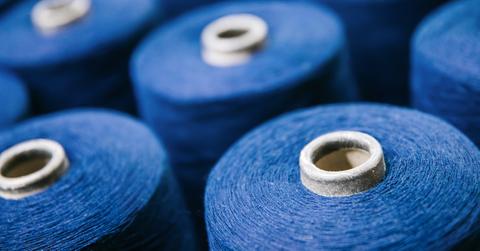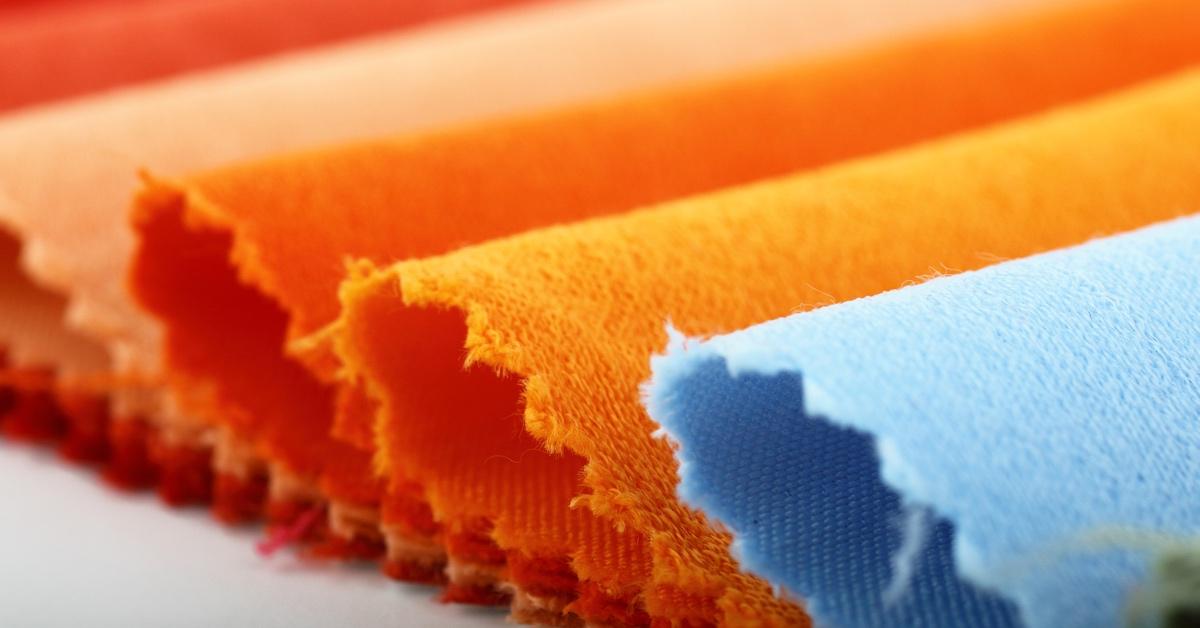This Unique, Sustainable Fabric Is Made From Milk
Published Sept. 15 2023, 1:22 p.m. ET

Globally, people have been searching to create a more sustainable fashion world. Some of these solutions include eliminating the use of environmentally-destructive fabrics, such as wool, leather, and plastic-based materials. While thrifting has become popular, in large part thanks to social media, technological advancements also mean more creative fabrics with which to play, like cactus leather or mushroom leather.
Although there are many issues with the agricultural industry surrounding cow's milk, a potential sustainable fabric has risen: milk fiber. What is milk fiber, what are the advantages of milk fabric, and what are some of the disadvantages of milk fabric? Here's what you need to know.

What is milk fiber fabric?
Milk fiber, or milk fabric, better known as casein fiber fabric, is a type of fabric made from a protein called casein found in milk, according to Well Fabric. Although milk fiber seems like a modern innovation, Nature says that milk fiber was first produced and patented by Antonio Ferretti in 1937 and sold under the name Lanital. The purpose of milk fiber was intended to capitalize on similar successes with rayon.
The popularity of milk fiber deteriorated in the 1930s and 1940s when other synthetic fibers for clothing were created, but it seems that milk fiber is returning to popularity as an interesting sustainable alternative.
How is milk fiber made?
Per Well Fabric, the process of creating milk fiber is relatively simple. First, milk is skimmed to extract the fat, then dehydrated to become a sort of milk protein powder. Then, the casein fiber is extracted, rinsed, and dried to become a powder. Next, the casein is dissolved in an alkali solution until it becomes a syrup, then dehydrated once more. This solution is run through a coagulation bath and then a hardening bath using formaldehyde.
Finally, the fibers are rinsed, dried, and cut into shorter fibers, which can be used for clothing!
What are some of the advantages and disadvantages of milk fabric?
Like all fabrics, there are advantages and disadvantages of milk fabric. Some of the advantages include:
- Biodegradable
- It can be blended with other fibers such as wool, silk, cashmere, or bamboo
- Good moisture absorption
- Resistant to heat
- Comfortable to wear.
However, because milk fabric is made from cow's milk, the product has a few disadvantages as well.
- Not vegan
- Milk production is part of animal agriculture, which is responsible for several harmful practices, such as contributing to greenhouse gases and animal abuse.
- Prone to wrinkling/requires special laundering care
- Potentially prone to damage over time; rips easily.
Would you ever purchase milk fabric clothing? For an idea that seems so unusual, it could be the next big trend. Then again, if the disadvantages balance out the advantages, maybe it's best to continue looking for other, more plant-based solutions.